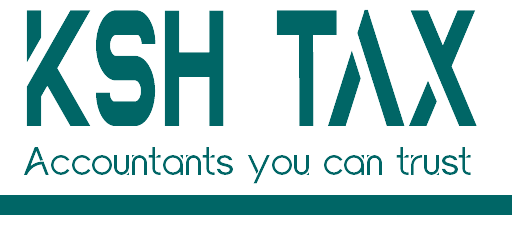Choosing the right business structure is crucial for effective asset management and business operations. Two common structures are trusts and companies, each offering unique benefits and challenges.
Trusts are legal arrangements where one party, the trustee, holds and manages assets for the benefit of another party, the beneficiaries. They are often used for estate planning, protecting assets from creditors, and ensuring privacy in asset distribution.
Companies, on the other hand, are legal entities designed to conduct business. They provide limited liability protection to owners (shareholders) and offer opportunities for capital growth through issuing shares.
Understanding which structure aligns with your goals can be complex. This post offers a comprehensive comparison between trusts and companies to help you make an informed decision.
Understanding Trusts
A trust is a legal arrangement where one party, known as the trustee, holds and manages assets for the benefit of another party, referred to as the beneficiaries.
This structure is often used in asset management to ensure that assets are handled according to specific intentions and safeguarded from potential risks.
Roles within a Trust
- Trustee: The individual or institution responsible for managing the trust assets according to the terms set out in the trust deed. They have a fiduciary duty to act in the best interest of the beneficiaries.
- Beneficiaries: The individuals or entities that benefit from the trust. They receive income or other benefits as specified by the trust deed.
Common Uses for Trusts
Trusts serve various purposes in asset management, including:
- Estate Planning: Trusts can help manage and distribute an individual’s estate efficiently after their death, avoiding probate and ensuring privacy.
- Asset Protection: By placing assets into a trust, individuals can protect them from creditors and legal claims.
- Tax Planning: Certain types of trusts offer tax minimization benefits, potentially reducing estate taxes and capital gains taxes.
Types of Trusts
Several types of trusts cater to different needs:
Discretionary Trust
The trustee has full discretion over how income and capital are distributed among beneficiaries. This type offers flexibility but requires careful selection of a trustworthy trustee.
Example: A family setting up a discretionary trust to provide financial support to children and grandchildren at various stages of their lives.
Unit Trust
Here, beneficiaries hold units representing their share of the trust’s assets. Income is distributed based on unit holdings rather than trustee discretion.
Example: Investment funds often use unit trusts to pool investors’ money into a diversified portfolio managed by professional fund managers.
Understanding these fundamental aspects helps clarify how trusts operate differently from companies. Each type serves specific purposes and offers unique advantages for asset protection, estate planning, and tax strategies.
Advantages and Disadvantages of Trusts
Benefits of Trusts
Trusts offer several advantages that make them an appealing structure for asset management and estate planning:
- Asset Protection: One of the primary benefits is shielding assets from creditors and lawsuits. Assets held in a trust are generally not considered part of the trustee’s or beneficiaries’ personal estate, offering a layer of protection against legal claims.
- Privacy Benefits: Unlike wills, which become public records during probate, trusts maintain privacy as they do not go through this process. This means the distribution of assets remains confidential.
- Tax Minimization Strategies: Trusts can be structured to take advantage of various tax benefits. For example, certain trusts can help reduce estate taxes and capital gains taxes. They also offer opportunities for income splitting among beneficiaries, potentially lowering overall tax liabilities.
- Control Over Distributions: Trustees can set specific terms on how and when beneficiaries receive assets. This is particularly useful for managing inheritances, ensuring that funds are distributed according to the grantor’s wishes.
Downsides of Trusts
While the benefits are significant, there are also potential drawbacks to consider:
- Establishment Costs: Setting up a trust often requires professional legal assistance, leading to higher initial costs compared to other structures.
- Complexity in Administration: Trusts can be complex to manage and may require ongoing administrative tasks such as filing tax returns and maintaining accurate records.
- Loss of Control in Irrevocable Trusts: Once assets are placed in an irrevocable trust, the grantor loses control over them. This lack of flexibility can be a disadvantage if circumstances change.
- Limited Liquidity: Beneficiaries might face challenges accessing funds held in a trust promptly. This limited liquidity could be problematic if immediate financial needs arise.
These factors underline the importance of carefully considering whether a trust aligns with your asset management goals and consulting professionals to navigate its complexities.
Understanding Companies
A company is a legal entity formed to conduct business, providing a distinct separation between the business and its owners.
This separation is crucial as it offers limited liability protection, meaning that the personal assets of the owners, known as shareholders, are typically shielded from company debts and liabilities.
Definition and Purpose
- Legal Entity: A company exists independently of its owners. It can enter into contracts, own assets, incur liabilities, sue, and be sued.
- Roles of Shareholders: Shareholders are the owners of the company. They invest capital in exchange for shares, which represent a portion of ownership.
- Corporate Governance: The management of a company is typically overseen by a board of directors elected by the shareholders. This board makes major decisions and appoints officers to handle day-to-day operations.
Benefits
1. Limited Liability Protection
Shareholders are not personally liable for the company’s debts beyond their investment in shares.
2. Tax Structures
Companies can choose different tax structures based on their needs, such as:
- C Corporations (C Corps): Subject to corporate tax rates; profits taxed at both corporate and shareholder levels when distributed as dividends.
- S Corporations (S Corps): Profits are passed through to shareholders’ personal tax returns, avoiding double taxation.
- Subchapter S Corporations: These are special types of corporations that meet specific Internal Revenue Code requirements, allowing income to be passed through to shareholders without being subject to corporate tax rates.
3. Capital Growth
Companies can raise capital by issuing shares or equity interests. This can help fund expansion and growth opportunities.
Access to broader financial markets facilitates investment from individuals or institutions.
4. Perpetual Existence
Unlike other business structures, companies continue to exist regardless of changes in ownership or management.
Pros and Cons of Companies
Companies offer a range of benefits but also come with some notable drawbacks. Understanding these can help you decide whether this structure fits your needs.
Pros
- Limited Liability Protection: One of the most significant advantages is that companies provide limited liability protection to their owners. This means personal assets are generally protected from company debts and liabilities.
- Ability to Raise Capital: Companies have the capability to raise capital by issuing shares. This allows businesses to expand more rapidly than other structures.
- Tax Benefits: Corporate structures often enjoy various tax advantages. For instance, they can deduct certain business expenses that might not be deductible for other entities.
Cons
- Double Taxation: One downside is double taxation on corporate income. Profits are taxed at both the corporate level and again when distributed as dividends to shareholders.
- Regulatory Compliance Challenges: Companies face stringent regulatory requirements. This includes adhering to formalities like annual meetings, maintaining detailed records, and complying with a host of regulations that can vary by jurisdiction.
- Cost of Formation and Maintenance: Setting up a company involves higher initial costs compared to other structures. Ongoing maintenance, including compliance with regulatory requirements, can also be expensive.
- Increased Management Complexity: Operating a company often requires more complex management structures. Formal governance frameworks are necessary, which can add layers of administrative burden.
Understanding these pros and cons is crucial in deciding if a company structure aligns with your business goals.
Key Differences Between Trusts and Companies
When evaluating the trust vs company structure, several key factors come into play, particularly in terms of ownership, control, and regulatory obligations.
Ownership Structure
Trusts
Ownership in a trust is divided between the trustee (who holds legal ownership) and the beneficiaries (who hold beneficial ownership).
The trustee manages the assets for the benefit of the beneficiaries, which can create a separation between control and enjoyment of the assets.
Understanding the ownership dynamics in trusts is crucial as it involves nuanced distinctions between legal and beneficial ownership.
Companies
In a company, ownership is represented by shares. Shareholders own these shares and have voting rights proportional to their shareholding.
This allows for direct control over company decisions through shareholder meetings and votes.
Control Over Assets/Distributions
Trusts
Trustees have significant control over how and when assets are distributed to beneficiaries.
In discretionary trusts, trustees can decide which beneficiaries receive income or capital, providing flexibility but also potential complexity.
Companies
Directors manage the company’s operations and make decisions on asset utilization.
Shareholders generally receive distributions in the form of dividends, which are decided by the board of directors.
Regulatory Obligations
Trusts
Trusts typically have fewer regulatory requirements compared to companies.
They do not need to hold annual meetings or submit detailed reports to regulatory bodies.
However, they must adhere to trust deeds and relevant trust laws.
Companies
Companies face more stringent regulatory obligations, including holding annual general meetings, maintaining detailed records, and submitting financial statements and annual returns to corporate regulators.
The recent Corporate Transparency Act has further impacted these obligations.
Tax Implications
The tax implications differ significantly between trusts and companies:
Trusts
Family trusts often provide tax advantages by allowing income splitting among beneficiaries. Capital gains tax can be minimized if assets are held for a long period before distribution.
Companies
Companies are subject to corporate tax rates. Profits may face double taxation—once at the company level and again when distributed as dividends to shareholders.
However, there are different structures like S Corporations (pass-through taxation) that can mitigate this issue.
Ownership Dynamics
Understanding ownership dynamics is crucial:
- In a trust, ownership is more nuanced with legal vs. beneficial ownership distinctions.
- In a company, ownership is straightforward with clear demarcation through shareholding.
Trusts vs Companies in Australia
In Australia, choosing between a family trust and a corporate structure depends heavily on individual circumstances:
- For those seeking flexibility in income distribution and potential tax benefits for families, trusts might be preferable.
- For businesses aiming for capital growth through investment or sale of shares, companies offer an attractive route.
By comprehensively comparing these aspects—ownership structure, control over assets/distributions, regulatory obligations—individuals can better understand whether a trust or company aligns with their goals
Choosing the Right Structure for Your Business: Factors to Consider and Consulting Professionals
Choosing between a trust and a company structure depends on several factors, each tied closely to your business goals, financial responsibilities, and asset protection strategies.
Here are some key considerations to guide your decision:
Long-term Business Objectives
- Growth Plans: Companies often provide better opportunities for raising capital through issuing shares, which can be vital if you plan on expanding your business significantly.
- Succession Planning: Trusts may offer more flexible solutions for estate planning and ensuring smooth transitions of assets to beneficiaries.
Asset Protection and Income Distribution
- Protection from Creditors: Trusts can shield assets from creditors, an essential strategy if you face potential legal claims.
- Income Distribution Control: Trusts allow for discretionary distribution of income to beneficiaries, providing flexibility in managing family finances.
Financial Goals and Asset Types
- Tax Implications: Companies and trusts have different tax benefits. For instance, family trusts in Australia may offer advantages like tax minimization strategies. On the other hand, companies may benefit from various corporate tax structures (e.g., S Corp vs. C Corp).
- Asset Types: The nature of the assets you hold can impact the suitability of either structure. Real estate investments might benefit from being held in a trust for protection and privacy, while operational businesses could thrive as companies due to easier capital raising capabilities.
Professional Advice is Crucial
Navigating the complexities involved in choosing between trusts and companies often requires professional guidance.
Consulting with accountants or lawyers ensures that you evaluate the pros and cons effectively:
- Legal Implications: Understand regulatory obligations, liability protection, and governance requirements.
- Financial Advice: Gain insights into tax benefits, asset management strategies, and long-term financial planning.
Factors to Consider
When determining which business structure is best for your situation:
- Assess your current financial status and future projections.
- Examine the level of control you wish to maintain over your assets.
- Evaluate the administrative burdens associated with each structure.
- Consider the costs of establishment and maintenance, as trusts tend to be more complex initially but might offer long-term savings.
Understanding these elements helps clarify whether a trust or a company aligns better with your objectives.
Each structure has distinct advantages tailored to different scenarios; evaluating them thoroughly aids in making an informed decision about what is a trust business structure versus a corporate one.
Trusts or Companies: Your Next Steps
If you’re still uncertain whether a trust or company is the right fit for you, contact us for assistance with company or trust registration/setup.
Our team of experts is here to help you navigate these complexities.
Reach out to us or book an appointment for professional guidance tailored to your specific needs.













